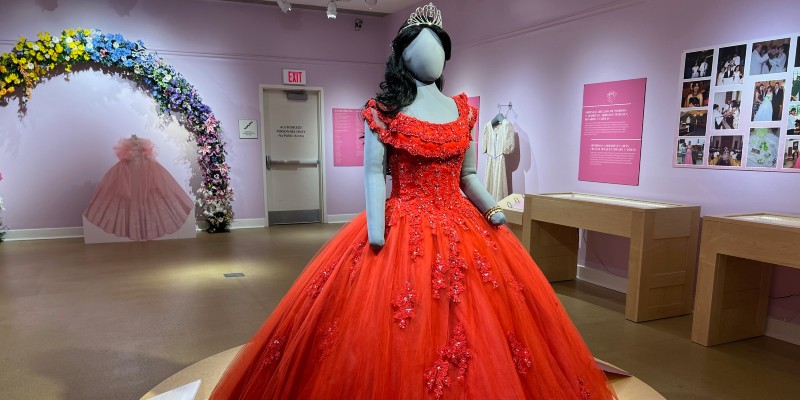Coming of age traditions are a part of many cultures. One of those traditions, the quinceañera, is the subject of a new, temporary exhibit at Spurlock Museum. A quinceñeara is a coming of age event for 15 year old girls, that is a cultural and sometimes religious celebration for Latinx/es and Latin Americans.
The exhibit is a project that has been two years in the making, and it was born out of an independent study group in the Institute of Communication Research, which is the doctoral program in the College of Media. Led by Dr. Angharad Valdivia, a research professor and faculty member in Latino/Latina Studies and the Department of Communication, the study group read a book by Rachel Gonzalez called Quinceañera Style: Social Belonging and Latinx Consumer Identities. “We had a lot of really productive discussions, and we thought of ways to extend that research.
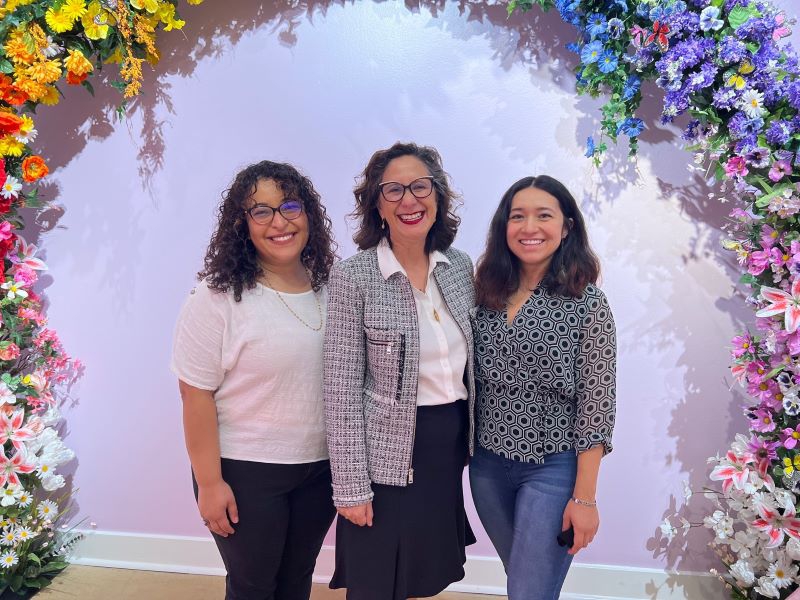
Stephanie Perez, Dr. Angharad Validivia, and Adriana Cano. Photo by Julie McClure.
These are very creative scholars,” Valdivia says of her students, Ariana Cano and Stephanie Perez, both 3rd year doctoral students in the ICR. Cano’s research focuses on Latinas, Chicanas and Indigenous women self-presentation on social media sites, while Perez is focused on Latinx teen girls in television and film. After reading the book, they began brainstorming ideas on some sort of creative project to do together.
Spurlock Museum was preparing to call for proposals for a new exhibit, but Validivia approached them with this ready-made project idea, which became “Quinceañeras: Celebration, Joy, and Ethnic Pride”, now on display through December 4th.
They brought in a 4th curator, Dr. Dora Valkanova, to round out the team. A recent graduate of the ICR, she brought her video production skills to the project.
Quinceñeara celebrations have religious roots, particularly tied to Catholicism. There are some who go through the sacrament of confirmation within the church prior to becoming a quinceanera, and include religious elements in their celebrations. “Part of that includes giving the ramo (bouquet) to the Virgin Mary, all of your items…your bible, your rosary…are customized. But it’s all very much dependent on the quinceañera’s family and religious background,” says Cano. There are some who choose to not include these elements, and keep it a more secular, cultural event. They may skip the religious aspects entirely, or they aren’t prominently featured.
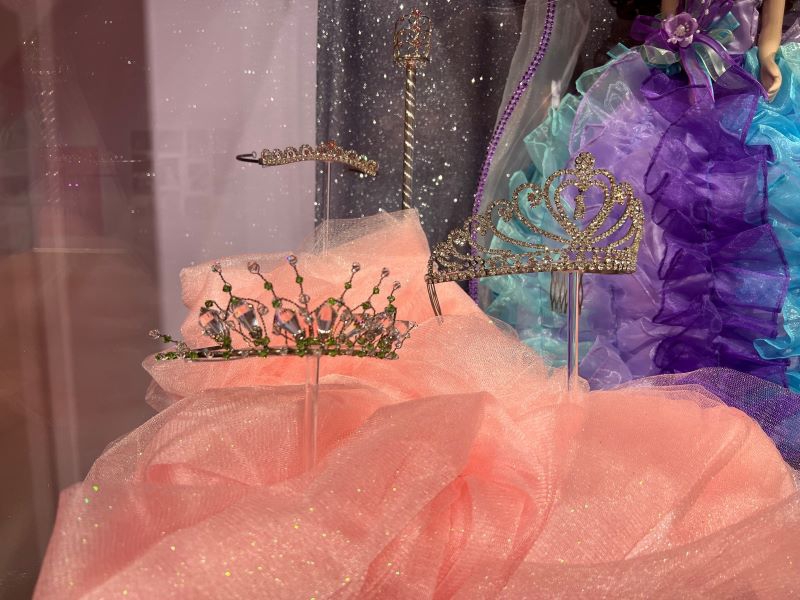
Photo by Julie McClure with permission from Spurlock Museum.
While there are traditional elements that you will see represented in the exhibit: sparkly ball gowns, a corona (tiara), an elaborate cake, a doll to be passed to a younger girl (called The Last Doll, signifying an end to childhood), and a court of honor with supporting friends (chambalenes and damas), Perez emphasizes that not all quinceñearas are alike. “These kinds of celebrations are really expensive, so they are not all going to look the same…some people have backyard parties or even just dinner with family and friends. It depends a lot on the family’s financial situation as well as their regional influences.”
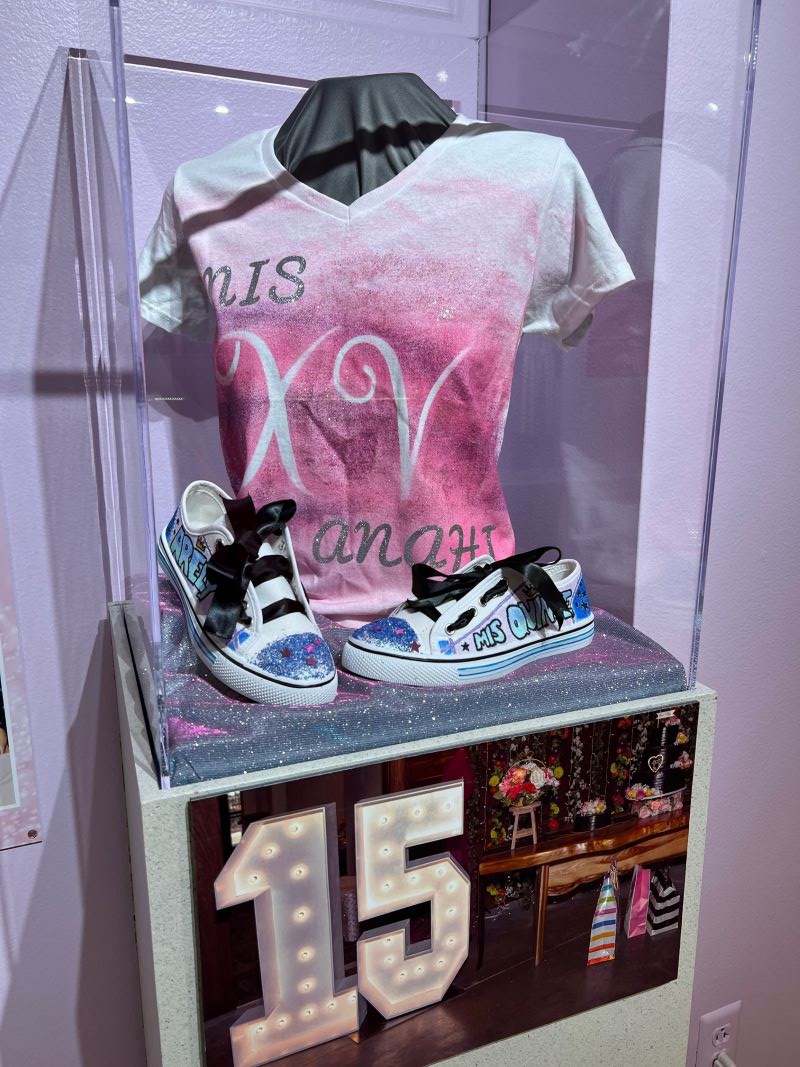
Photo by Julie McClure with permission from Spurlock Museum.
Choreographed dances are an important part of a quinceanera, something Cano knows first hand as someone who spent six years as a choreographer, helping 30 quinceañeras and their courts prepare for their big days. As she described the process, a video played in the background of a dance she choreographed: “You go through months of practicing, and through those practices is where the quinceañeras begin understanding what it really means to have a quinceanera. It’s the first time she’s negotiating her identity, and making big choices for herself. It’s the first time a lot of them are a part of something culturally significant.” There are five dances: la entrada ( grand entrance), el vals ( waltz), el baile de la última muñeca (the Last Doll dance), el baile con los padrinos (godparents’ dance), and el baile sorpresa (surprise dance). The surprise dance is an opportunity for the quinceañera to express her preferences and creativity, and can be in any sort of style or genre.
There is no “official” tradition for boys, and the typical celebration remains quite traditional in regards to gender roles, but the team found exceptions to this in their research. Dr. Michael DeAnda, who will be attending an upcoming film screening in relation to the exhibit, had a quinceañero. The team found media representations of queer girls having quinceañeras. “Sometimes they will exchange a sparkly gown for a tuxedo with sparkly elements,” says Cano. They may also switch up gender roles in the selection of their courts. The film screening of Vida on October 15th will feature a non-binary person, who at 30 had a “double quinceañera” with a 1980s telenovella theme.
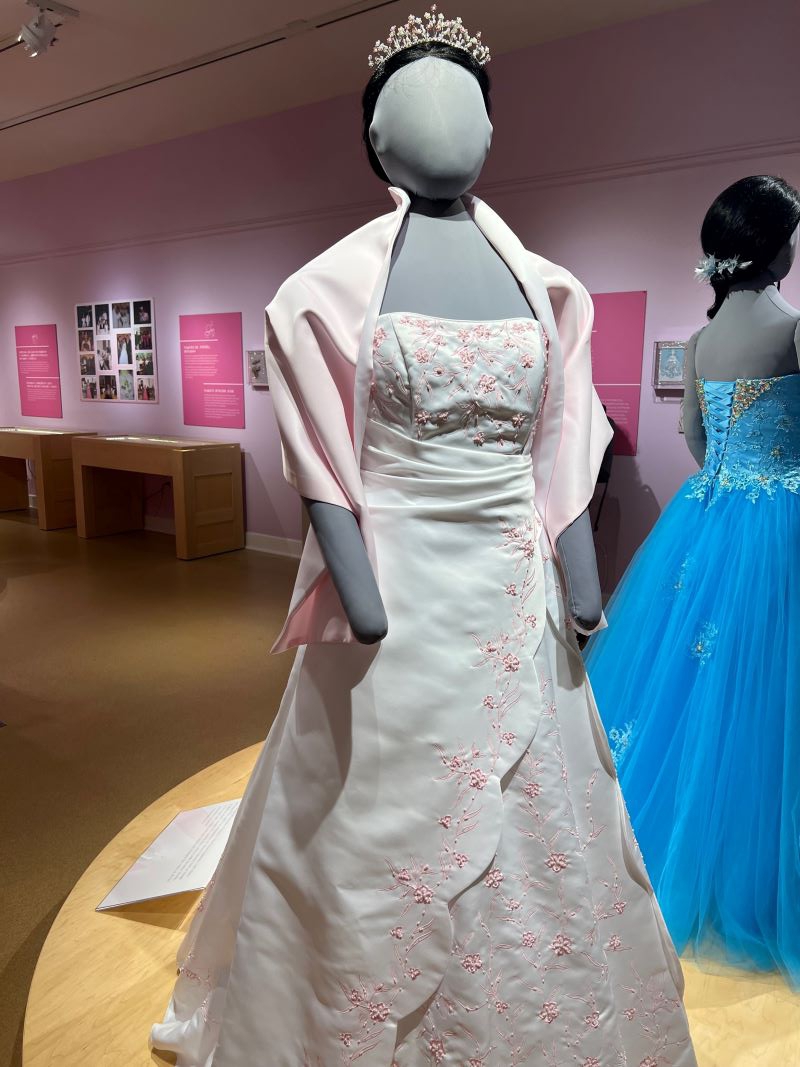
Photo by Julie McClure with permission from Spurlock Museum.
Perez describes how planning a quinceñeara is much like planning a wedding, and you will see this similarity as you explore the exhibit. You’ll be initially struck by the elaborate gowns at the entrance, which they acquired from various sources. The white gown, very similar to a wedding gown, was worn by Perez for her quinceañera. Another was lent to Cano by a former student, and Perez found yet another at a garage sale for $20.
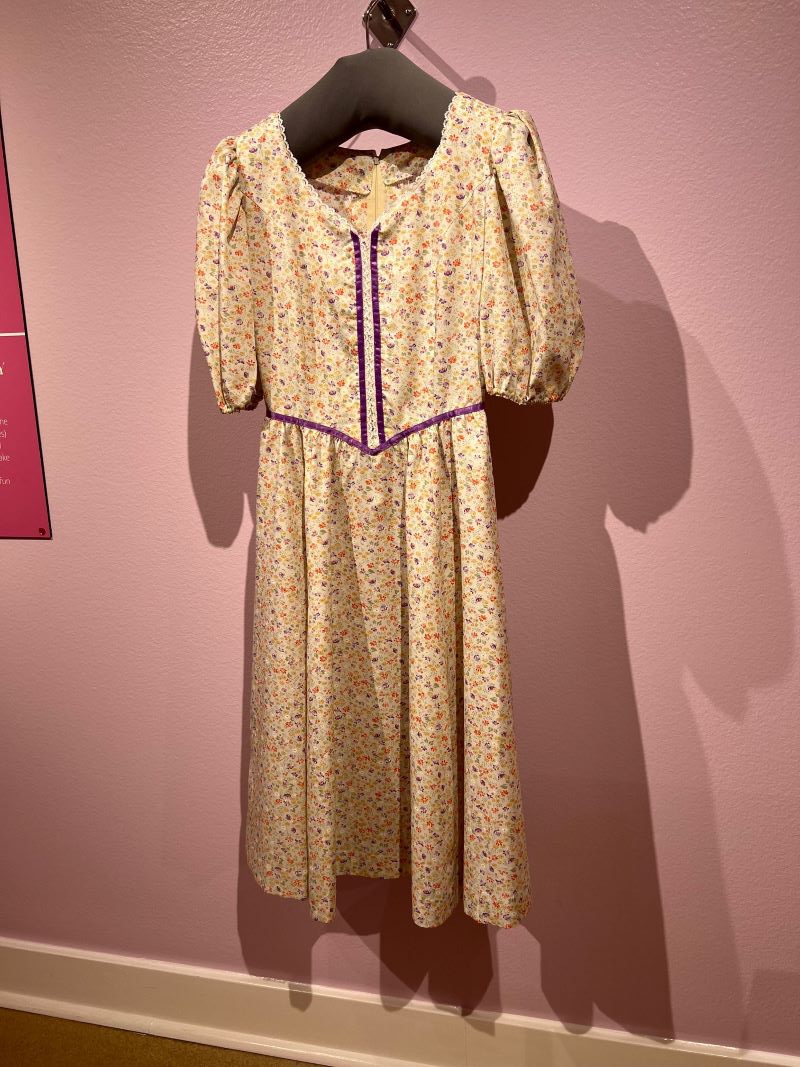
Photo by Julie McClure with permission from Spurlock Museum.
Look beyond the elaborate gowns, and you’ll find a simple flowered shift hanging on the wall, with a sweet story, described by Valdivia:
This was donated by a local resident, her name is Georgia Barton. She’s from Bolivia. Her aunt came here in 1983, and wanted to make sure she [Georgia] had a quinceañera, and there was no culture of Latinos here. She handmade the dress, made sure she had a quinceañera, then went back to Bolivia and died of cancer. She didn’t tell anyone she was dying, but this is what she wanted to do before she passed away…ensure that her niece had a proper quinceañera.
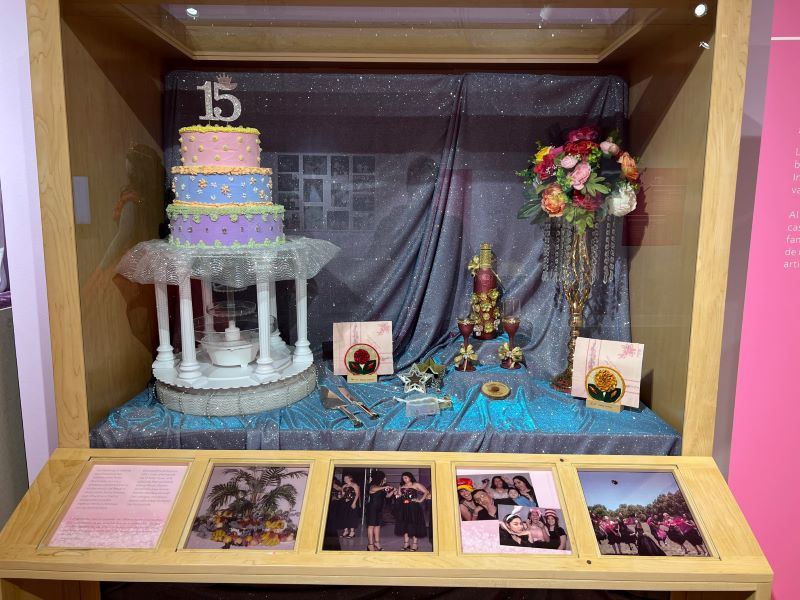
Photo by Julie McClure with permission from Spurlock Museum.
From a decades-old dress, to a decorative champagne bottle and glasses from a C-U quinceñeara that happened two months ago, to a faux cake created by Perez, the exhibit came together through both the gathering and creating of items, with several contributions from local residents.








